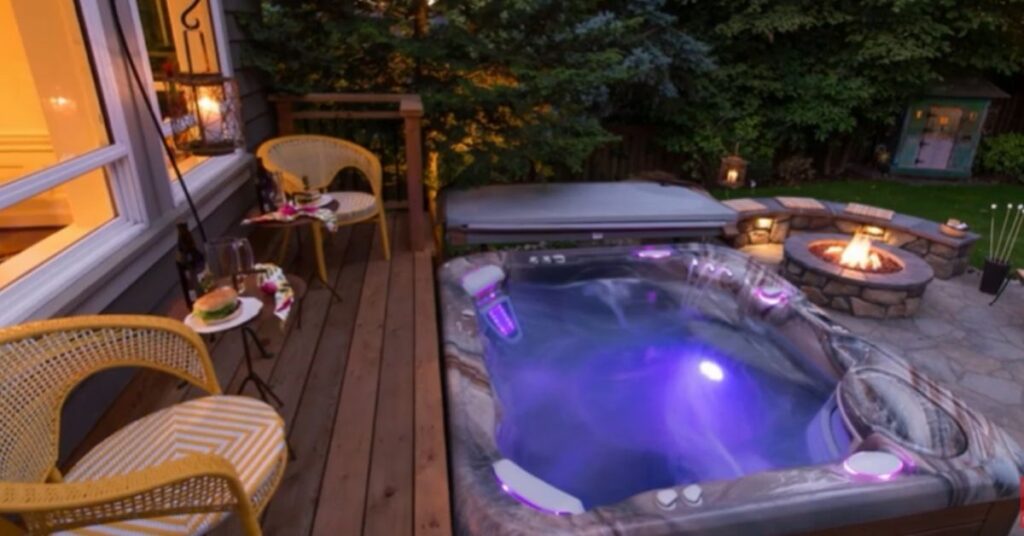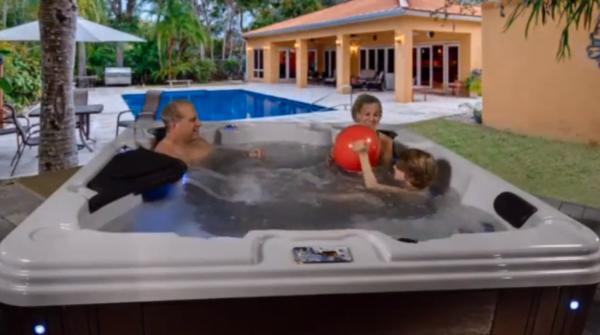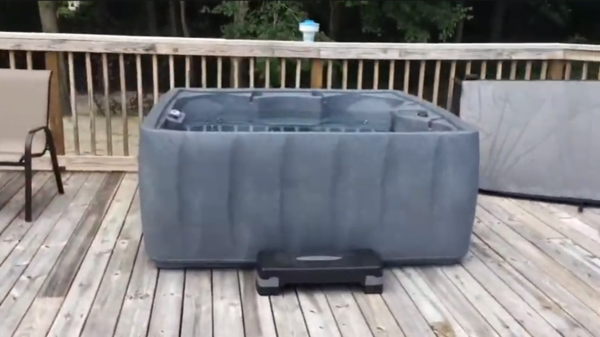This article will talk about the different ways of shocking a hot tub and what to look out for when choosing the best method for your hot tub.
Shocking a hot tub is one of the most effective ways to keep your hot tub in tiptop shape. But while there are a variety of methods you can use to shock your hot tub, not all of them offer the same benefits, and you need to know the differences before choosing a specific method.
This article will discuss the importance of shocking your hot tub, the different ways of shocking a hot tub, and what to look out for when choosing the best method for your system.
What Is a Hot Tub Shock and Why You Need It
Shock treatment breaks down organic waste in the spa's water system. The treatment helps clear the water of bacteria and debris, making it smell and look clearer.
In most cases, after treatment, the water quality is totally restored. Chloramine is quickly broken down into free chlorine, which has a very high disinfectant power. Bromine is converted into hypobromous acid (a sanitizer), but this doesn't kill the bacteria because it is not as powerful as chlorine.


These two products are 100% compatible with the alternative sanitizer systems that we sell. Regardless of which sanitizer system you use, periodic shocking is essential for clean hot tub water. Periodic shocking is also important for optimal performance of the sanitizer system.
Key Takeaways: Shocking your hot tub every once in a while makes it hygienic, safe to use, and looks good as new.
Hot Tub Shock Types
There are four main types of spa shock available. Two of those types are viable for hot tubs.


Calcium Hypochlorite
Also known as cal hypo, it's inexpensive and convenient because it's widely available.
Calcium Hypochlorite is mainly used in pools, but some hot tub owners also use them to shock their hot tubs. It's inexpensive and readily available in any local hardware store. However, it may not be the best way to shock your hot tub.
Calcium Hypochlorite is unstable and quickly loses its chlorine content when exposed to heat. In a small body of water like your hot tub, its calcium content can deposit scale very quickly, potentially damaging hot tub surfaces and components.
Important: Only use chemicals labeled specifically for use in hot tubs. Hot tubs have much higher temperatures than pools, so the chemicals work differently. Only the chemicals listed specifically for use in hot tubs will work well for your hot tub. Using chemicals not suitable for hot tubs could also void your warranty.
Dichlor
Dichlor is the active ingredient in most brands of hot tub shock. Unlike calcium hypochlorite, it is stable enough to withstand the heat from your hot tub. It can usually be added directly to the water without dissolving it first, but always follow the manufacturer's instructions on the package.
The sanitizing power of your hot tub depends on the concentration. Too much heat might eat away at the chlorine quickly, so keep watch on your sanitizer level and shock your hot tub only at dusk or night if you don't have a gazebo or any roofed structure.
Lithium Hypochlorite
Chlorine Hypochlorite is often found in pool stores. But you may not find much of it nowadays. It's not available as much as when it was widely used for shock treatment in pools.
You can find lithium hypochlorite in places other than the local grocery store, but you'll have to pay more for the shock because the price of lithium has increased significantly. It's still a welcome option if you're willing to pay more. Otherwise, go for a less expensive option like dichlor.
Non-Chlorine Shock
Although sometimes marketed as a sanitizer, non-chlorine shock doesn't actually kill bacteria. It's mainly used to remove contaminants that give your hot tub water a cloudy appearance. This, in turn, slows down the growth of bacteria. Its main active ingredient, potassium peroxymonosulfate, is also an effective oxidizer.
The good news is if you're using chlorine as your sanitizer, non-chlorine shock will activate the free chlorine necessary to kill off bacteria in your hot tub. The same goes if you're using bromine.
Key Takeaways: Dichlor and non-chlorine shocks are the most common hot tub shocks available, and they can be used both for chlorine and bromine hot tub treatment systems.
When Is the Best Time to Shock Your Hot Tub?
When you refill your hot tub, it's a good practice to shock with dichlor. For regular maintenance, use a non-chlorine shock. Shock is also recommended when the hot tub has been neglected or after heavy use.


The best time of the day to shock your hot tub outdoors is during dusk or night. You can shock your hot tub any time of the day indoors. We want to keep the sun's rays away from our hot tub while being shocked to give enough time for the chlorine to do its job.
You should repeat the hot tub shock routine at least once a week or twice if used more often or by a lot of people.
Key Takeaways: Always remember hot tub shocks works best with low temperatures. For best results, shock your hot tub at least once a week.
Shocking Questions (FAQ)
Do I need to cover my hot tub when shocking?
Answer: This might seem counter-intuitive, but leaving your hot tub uncovered for at least 20 minutes after applying shock will help it disperse and dissipate. However, put the cover back on after 20 minutes if you're not going to use it right away to prevent evaporation.
How long before I can use the hot tub again?
Answer: There's no hard and fast rule about how long it takes for the sanitizer to drop back down to a safe level once you shock it. It's going to depend on when it reaches its safe level. If your hot tub shock doesn't already come with one, water-testing kits are available in hardware stores.
How much hot tub shock do I use?
How much shock you need largely depends on the size of your hot tub and how much water it can hold. Check your hot tub's manual. However, if it's pre-owned or you can't find the manual, you can measure the volume using simple math [Hot Tub Length in Feet] x [Hot Tub Width in Feet] x [Hot Tub Depth in Feet] and multiply it by 7.5 to get you hot tub's capacity in gallons.
Conclusion
There are many ways of shocking a hot tub, but you'll have to pick one based on your budget and personal preference. Read through this article again if you missed some details and make some notes. Once you have done that, you can choose a method to shock the hot tub that will be suitable for your hot tub.
